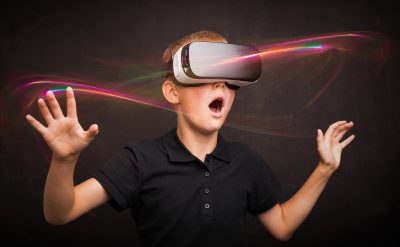Virtual reality (VR) is considered today the most promising enterprise technology by different organizations. According to traditional thinking, businesses looked upon VR technology as a futuristic, cumbersome, primary technology aimed at gaming or entertainment consumers.
While VR is snowballing after businesses have realized its value to grow from every aspect, companies are now continuously exploring all sides of VR that can be used best to enhance and expand their business.
Customer needs are changing each day, and so are their expectations increasing from the brands. As newer technologies evolve, customers start expecting brands to provide services using those technologies. Customers look forward to receiving the best possible solutions and experiences. This makes about 75% of the world’s biggest brands move toward virtual reality to improve their marketing strategy.
Understanding VR marketing
Before moving ahead, it is important to understand how businesses convert VR into VR marketing for their strategic growth. Implementing virtual reality marketing makes brands and businesses bring their actual image and potential to their customers and develop new scope to attract customers. It allows different brands to provide the audience with an immersive experience, enabling them to create a personal connection with the brand. It gives them a reason for trusting a particular brand more than others.
VR helping to grow business
1. Build a real world
Building a visual that shows people how a product can transform the world or add value to their lives using VR can be the best idea. VR has the potential to provide that illustrative experience to people who can turn into potential customers.
For instance, companies can create visuals for a product that provides potential customers with real-time experience on how to use the product or how it can help them. Using innovative graphics to design the best virtual environment and make it as interactive as possible gives a memorable experience for customers. Moreover, a better understanding will create more chances of converting people into potential customers.
Companies can imagine VR as a blank canvas to draw their pictorial world and show potential customers how effective it would be to live in that world. The more people find it relatable, the more they desire to turn their world like that. This can be possible only when the customers buy the product or services. This is positively called smart marketing.
2. Build a story
At times, the company fails to build a bond with customers as they lack real experience. Earlier, movies and videos were amongst the most immersive storytelling medium, but that was not enough as it was only visible and not interactive.
Today, VR has turned the situation. It not only makes people watch but also gives a real-time feel. This is what makes VR a potent tool for storytelling. To make a product sellable, companies should build a visual story around it to lure their audience.
The best example of leveraging VR in storytelling was introduced by The New York Times (NYT). It was when NYT suspected a drop in their number of readers and subscribers. They decided to adopt something new that would help them to represent themselves through technology.
The company presented the New York Times’ VR of stories. It made readers visit the place virtually, where the news they are reading about is actually happening, thus giving them a real feel about the situation. This brought up emotional intensity amongst readers that helped NYT to regain its brand loyalty. All thanks to virtual reality.
3. Reflect the human side
Even after buying a product from that particular company, it won’t guarantee customers’ loyalty. Customers tend to try different brands when they buy the same thing. So, to stay in the long run, companies must put more effort into making their retention rate better.
The most effective way to do that is by showing customers the human side. Making customers understand that it is just not another brand trying to sell a product but are as human as they are.
Companies can use VR to create a virtual experience where the customers can be given a tour of how their offices, workshops, factories look, how the product is made, hygiene maintained, etc. This would give them a face-to-face view and help them understand how much employees and employers put in work and effort to serve their needs.
It will not only show the human side but also will build a foundation of trust among customers. Showing customers a reality gives way to trust formation, thus, making people loyal to the brand. And this is how VR contributes to the human side.
4. Turn ads into a fun experience
Often people are overflooded with ads, and most of them fail to attract people to buy their product. This happens as ads fail to grab the attention of the people and create the needful experience. In the form of pop-ups, autoplay videos, etc., ads often disinterest people, leading to huge advertisement campaigns failing.
Using a creative idea like blending promotion with a little entertainment can be the best way to create an impression in audiences. However, VR can add that flavor to ads giving it an engaging and immersive experience.
Here is the best example. Recently some mobile gaming companies have added a feature where if a player watches the complete advertisement video, it will help him unlock new levels or earn some bonuses. Such experiences will make ads enjoyable and part of the game without annoying players.
Brands should start leveraging VR to stay ahead of their competitors in the future as the potential of VR in the ad industry is yet to be fully explored.
VR with businesses will build a better future
The above examples clearly exhibit the advantages of VR for different sectors such as retail, personal and consumer services, manufacturing, transportation, etc.
Before adopting VR, businesses need to evaluate their potential. VR can prove a powerful booster for any business when implemented with the right planning and investment. Future holds great opportunities for VR, and businesses just need to understand and explore them.
Almost 80% of the top tech companies have already invested in VR, which will continue to grow. The gaming industry has been the most popular domain, which uses VR, but the technology is no longer limited to this industry alone.
As the number of people using virtual reality technology increases, businesses should capture these opportunities into their daily operations and reap the benefits.
For more information visit our latest whitepapers on virtual reality and related technologies here.










